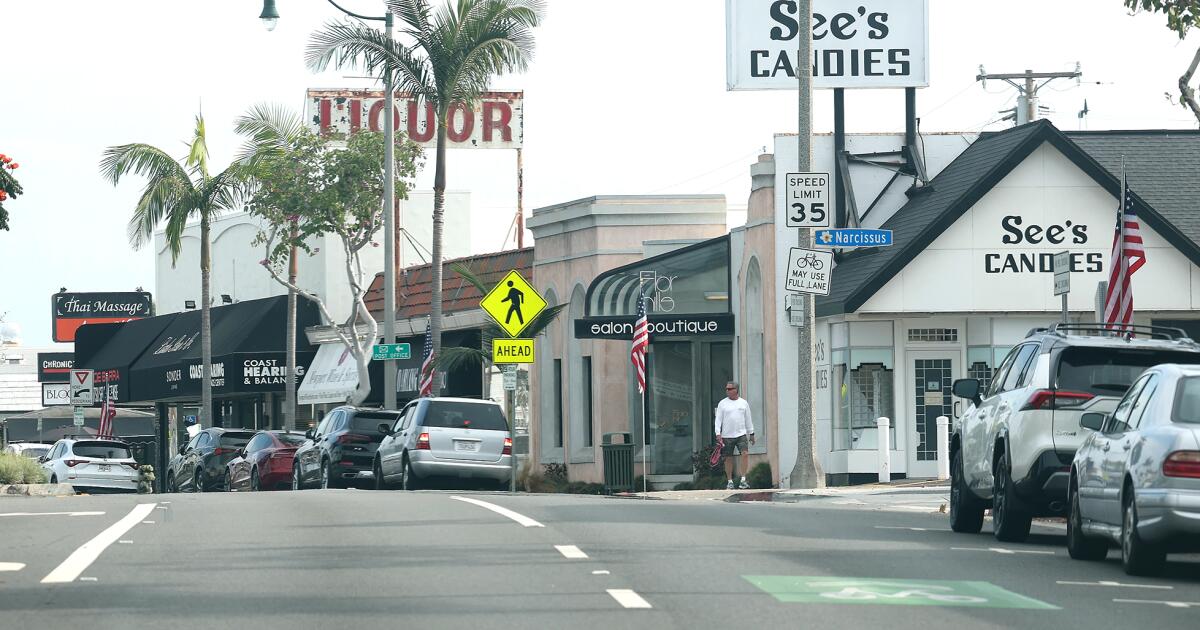Copyright Los Angeles Times

The mile-long stretch of businesses along Pacific Coast Highway in Corona del Mar is in need of more restaurants and available parking in order to make it a true destination, a corridor study found. Newport Beach City Council listened to a slew of policy recommendations from city staff as part of a presentation on its findings earlier this month. “This is a true planners’ case study,” Mayor Pro Tem Lauren Kleiman said during the Nov. 4 meeting. “How do you revitalize a main street that doubles as a highway and is nestled between a residential area and a public beach?” The study, which got underway about a year ago when the city hired consultants to help staff, first painted a data-driven portrait of the corridor as it stands today. According to the study’s findings, the strip attracts roughly three million people per year. About 40% of the strip’s visitors live within five miles of it. On average, visitors are younger than 40 and wealthy. The corridor is mostly populated by businesses offering neighborhood goods and services, like barbershops, nail salons and real estate offices. Food and beverage establishments total just 20% of the strips offerings. “That’s pretty low,” Liz Westmoreland, the city’s principal planner, told councilmembers. “When we look at other successful main streets, we typically…see the food and beverage [businesses] have closer to a third or even half.” Such businesses encourage more frequent and longer stays, a key aim for the corridor’s future. Westmoreland suggested that councilmembers could consider streamlining preferred land uses for restaurants without the need for public hearings. At the same time, future permits for car wash, auto repair and drive-through businesses would be prohibited. If more visitors are to flock to the area for dining and entertainment, adequate public parking is needed to accommodate them, the study also found. Sufficient parking exists, but too many spaces are locked up in private lots. “That’s really the issue that we’re seeking to solve here,” Westmoreland added. “We don’t have one magic solution, but we have a suite of solutions that we really think can help with this issue.” The city could utilize technology, such as an app or digital signage showing available parking. Other recommendations included promoting the use of trolleys, especially since a significant portion of the corridor’s visitors are local. Newport Beach could also follow in San Clemente and Dana Point’s footsteps in leasing private spaces to free up lots, city staff suggested. In addition to more restaurants and available parking, a revamp of the corridor would also include infrastructure improvements, especially at key intersections. Jim Walker, owner of the Bungalow Restaurant, pushed for safety upgrades after a driver suffered a seizure and plowed through a retainer wall into his business at 80 miles-per-hour eight years ago. He added that a person walking past the restaurant while wearing headphones just 15 seconds before the accident narrowly avoided certain death. “In light of the fact that we’re trying to promote business…I think it’s our responsibility to also make sure that… our residents, our customers and our reputation is maintained safely,” Walker told the council. “That retainer wall currently is about 15 inches high. It’s not, in my opinion, adequate.” Jeff Brown, a longtime resident, suggested that the corridor’s parking woes could be resolved by converting to one-way streets with diagonal parking on both sides. “Bite the bullet and use the asphalt we have,” he said. A recommendation on bringing housing units atop businesses along the strip did not find favor with the broader community during outreach efforts according to staff. Residents are also concerned about losing neighborhood goods and services. Councilmember Noah Blom commended the study and favored a housing component. “I really like the idea that you get to live where you want to be,” he said. “I am in full support of staff’s recommendation on this. I’m in full support of the residential piece, as well. It’s going to be expensive and take a lot of love to get it done, but reinvigorating Corona del Mar is what I would love to see.” Kleiman said that a commitment to remove residential recommendations was made at the last outreach meeting. “I do believe some changes are necessary to avoid a dead or defunct downtown village,” she said in support of other suggested policies. “I don’t think anybody wants empty storefronts or low-end, high-turnover businesses. It’s important to acknowledge that we can’t implement changes without a plan to address all the concerns expressed.” The study’s outlined recommendations could be implemented starting as early as late 2026. “Let’s return Corona del Mar to what it was one day and something we can continue to be proud of,” Mayor Joe Stapleton said.



